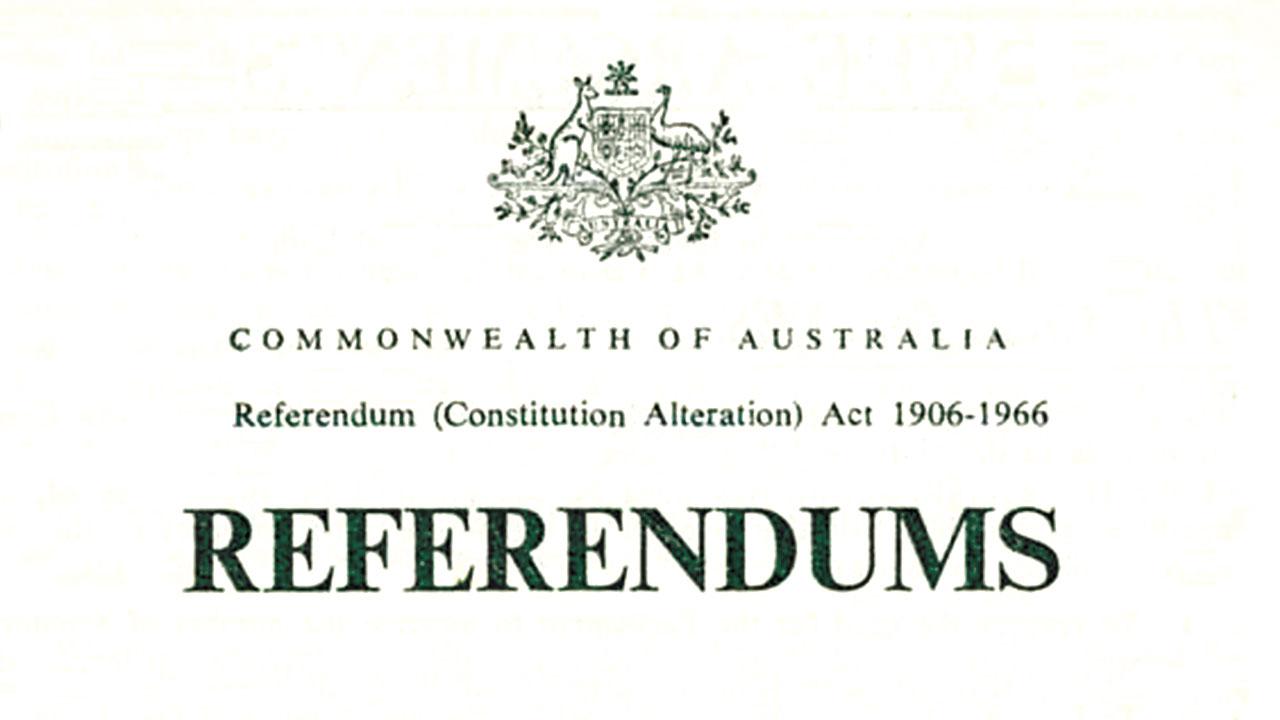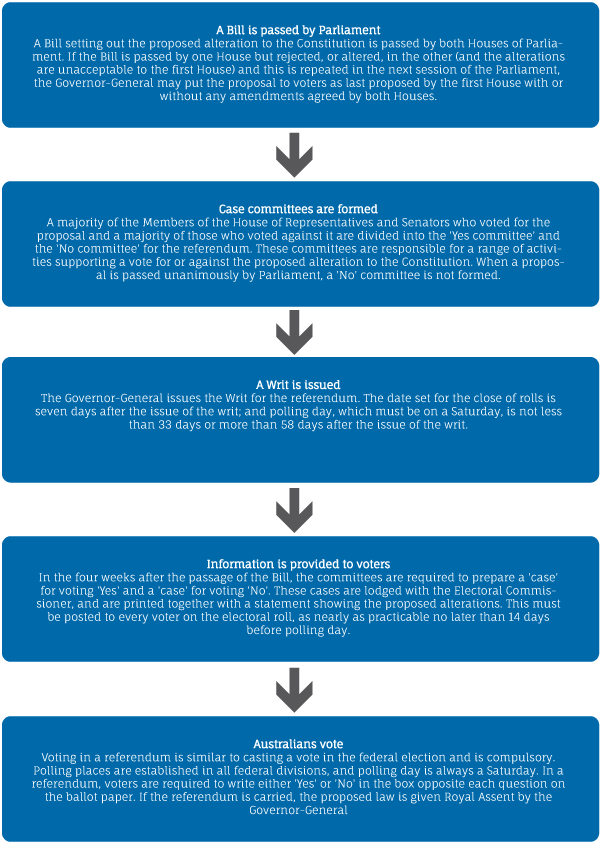
As the debate about Indigenous Constitutional recognition intensifies we appear to be moving to a possible referendum. It is therefore time for CEFA to disseminate information on how referendums work under the Australian Constitution.
The Australian Constitution can only be altered with the approval of Australian voters at a referendum
In order for this to occur:
- The proposed law must be passed by an absolute majority of both houses of parliament
- It must be submitted to electors within a specified time frame
- It must be approved the majority of electors in a majority of States and by a majority of the electors throughout the Commonwealth.
This is outlined in Section 128 of the Constitution:
The proposed law for the alteration thereof must be passed by an absolute majority of each House of the Parliament….
Not less than two nor more than six months after its passage through both Houses the proposed law shall be submitted in each State and Territory to the electors qualified to vote for the election of members of the House of Representatives….
And if in a majority of the States a majority of the electors voting approve the proposed law, and if a majority of all the electors voting also approve the proposed law, it shall be presented to the Governor‑General for the Queen’s assent.
Section 128 also outlines the process if one house of parliament refuses to pass the proposed alteration and the circumstances that allow the Governor-General to submit the law to a referendum:
But if either House passes any such proposed law by an absolute majority, and the other House rejects or fails to pass it, or passes it with any amendment to which the first‑mentioned House will not agree, and if after an interval of three months the first‑mentioned House in the same or the next session again passes the proposed law by an absolute majority with or without any amendment which has been made or agreed to by the other House, and such other House rejects or fails to pass it or passes it with any amendment to which the first‑mentioned House will not agree, the Governor‑General may submit the proposed law as last proposed by the first‑mentioned House, and either with or without any amendments subsequently agreed to by both Houses, to the electors in each State and Territory qualified to vote for the election of the House of Representatives.
There is also a provision in Section 128 to protect each state from any referendum that would diminish that state’s proportional representation:
No alteration diminishing the proportionate representation of any State in either House of the Parliament, or the minimum number of representatives of a State in the House of Representatives, or increasing, diminishing, or otherwise altering the limits of the State, or in any manner affecting the provisions of the Constitution in relation thereto, shall become law unless the majority of the electors voting in that State approve the proposed law.
Are there rules set out for referendums?
There are rules governing how referendums are conducted in the Referendum (Machinery Provisions) Act 1984.
How a Constitutional referendum works
The following is an outline of the process from the Australian Electoral Commission:

Referendums sound difficult
Referendums are hard and they were designed that way by the founders of our Constitution to keep our system of Government stable. Since federation 44 referendums have been held and only eight have been successful.
Seven of those eight had a majority in all of the states and six of the eight had an overall percentage of voters in favour above 70%.
It is very important to have very strong support in favour of a referendum for it to be successful.

